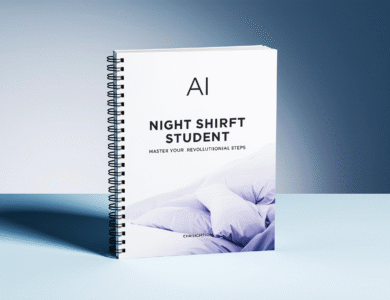
Ai planner night shift tutorial Working night shifts can be tough. It messes with your body’s natural rhythm and makes it hard to stay productive. But, with the right tools and strategies, night shift workers can make the most of their time and balance work and life better.
An AI planning tool can help night shift workers manage their time better. It lets them focus on what’s important and stay organized. By using AI-driven planning, people can make schedules that fit their needs and preferences.
This tutorial will share useful insights and practical tips on using AI planners to boost night shift productivity. By the end, readers will know how to optimize their night shift schedules and find a better balance between work and life.
Table of Contents
AI Planner Night Shift Tutorial: Getting Started
Traditional planning methods often don’t work well for night shift workers. They need something more specific. Night shift workers face challenges that regular planners can’t handle.
Why Traditional Planning Fails for Night Shift Workers
Traditional planners assume users follow a daytime schedule. But, night shift workers don’t fit this mold. This leads to inefficiencies in shift work scheduling.
Also, regular planners don’t offer the flexibility needed for night shift workers. They can’t adjust to the user’s energy levels and personal needs.
Key AI Features That Transform Night Shift Management
AI planners offer personalized productivity tips and adapt to your unique schedule. They adjust task lists based on your energy levels and peak productivity times, even when they’re not standard.
Moreover, AI planners provide predictive analytics. They help night shift workers prepare for upcoming shifts. This improves their ability to manage work and personal life.
First-Time Setup Guide for Night Mode Planning
To start with an AI planner, input your shift schedule and personal preferences. The planner will adjust its recommendations for your night mode planning needs.
It’s important to sync your planner with your calendar and other apps. This ensures seamless integration and productivity tips tailored to your night shift work.
- Healthy Lifestyle for Night-Shift Students: 7 Keys to Long-Term Success
- How to Optimize Your Sleep Schedule as a Night-Shift Student in 2025
- Optimize Your Night-Shift Studies with This AI Planner
7 Expert Strategies to Maximize Your Night Shift AI Planner
Managing night shifts well means prioritizing tasks, managing energy, and staying productive. The right AI planning strategies can help. These techniques improve performance and job satisfaction for night shift workers.
Smart Task Prioritization Based on Energy Levels
Managing energy levels is key for night shift success. AI planners can sort tasks by energy levels. This way, important tasks get done when you’re most alert.
Customizing Alert Systems for Overnight Productivity
Custom alerts boost night shift work by reminding you of important tasks. AI planners can set alerts based on your schedule and energy. This keeps you focused and on track.

Integrating Sleep and Health Metrics into Your Planner
Adding sleep and health data to your AI planner is smart. It helps manage night shifts better. The AI can offer tips to boost well-being and productivity.
Strategic Break Scheduling with AI Recommendations
Planning breaks is crucial for long night shifts. AI planners suggest the best times for breaks. This helps you come back to work refreshed and focused.
Leveraging Predictive Analytics for Shift Performance
Predictive analytics change the game for night shift workers. They forecast challenges and opportunities. AI planners with predictive analytics help you prepare and adjust strategies.
Cross-Platform Synchronization for Seamless Transitions
Many workers switch between tasks, apps, and devices often. AI planners that sync across platforms keep info up-to-date. This makes transitions smooth and reduces downtime.
Automating Routine Tasks During Low-Energy Hours
Automating routine tasks saves energy and keeps productivity up. AI planners can identify tasks for automation. They schedule these during less demanding times, saving energy for important tasks.
Using these 7 strategies, night shift workers can get the most out of their AI planners. This leads to better productivity, work-life balance, and overall performance.
Key Takeaways:
- Prioritize tasks based on energy levels to maximize productivity.
- Customize alert systems to stay on track during night shifts.
- Integrate sleep and health metrics for a holistic approach to productivity.
- Use AI recommendations for strategic break scheduling.
- Leverage predictive analytics to anticipate and prepare for challenging periods.
- Ensure cross-platform synchronization for seamless task management.
- Automate routine tasks during low-energy hours to conserve energy for critical tasks.
Conclusion
Managing night shifts well is key for industries that work all day and night. Using an AI planner for night shifts can really boost your work and personal life. This article has given you a detailed guide on how to plan your night shifts better.
Smart task planning, setting up alerts, and tracking sleep and health are all important. These steps help night shift workers manage their time better. The AI planner’s smart features make scheduling easier, saving you time.
Following the tips in this article can make you more productive and less tired. Using AI planning tools is a great way to get better at working nights. It leads to better health and job performance overall.



